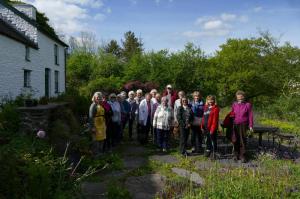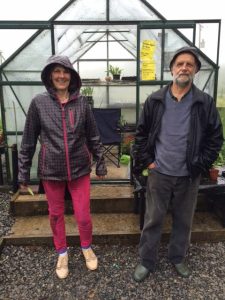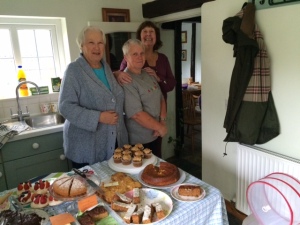Richard Cain – Hardy Geraniums
Our March meeting was, sadly, the last one at which we will hear Richard Cain from Penlan Perennials as he is retiring in September. Richard has given us several entertaining and informative talks over the years on a variety of subjects and this one on Hardy Geraniums was no exception.
The Geranium genus includes
- Pelargoniums – not hardy annuals
- Erodiums – soft velvety foliage which doesn’t like wet conditions
- Geraniums – generally fully hardy to -25 Deg. C, although there are a few non-hardy types.
- Appearance: they all have a crown of leaves at the centre but then can vary considerably from straggly stems to compact mounds. Leaves can be dissected, blotched and some are scented.
- Smaller Geraniums can be vulnerable to winter wet when the crown can rot.
- Species Geraniums only flower for 3 – 4 weeks as they attract pollinators and once pollinated, the flowers fade.
- Hybrids have a longer flowering season as they are usually sterile.
- There is a Geranium species for almost any site or situation! Eg Ground cover – G. macrorrizum; G. riversleaianum ‘Mavis Simpson’ (also flowers for 4 months). Shade – G. monacense, G. nodosum, G. phaeum, G. sylvaticum, G. versicolor & G. wlassovianum.
- Most are pest and disease free and rabbit and deer resistant. However they are susceptible to vine weevil.
- Thug like Geraniums such as G. oxonianum can be effectively controlled by cutting hard back before flowering has finished – this has the added benefit of encouraging a second flush later.
- Many x hybrids are sterile but flowers are often larger and last longer eg G. ‘Eureka Blue’, G.wallichianum ‘Crystal Lake’ and G. ‘Alan Mayes’ (like Magnificum but flowers for months).
- Good plants for pollinators: usually have reflexed petals. G. sylvaticum, G. ‘Cloud Nine’. Hybrids and alpine varieties are not so good.
Propagation:
- Seed: collect when ripe – they usually go black. Hold seed head between fingers and put in a bag or the capsule will ‘explode’ scattering the seeds everywhere. Sow when fresh in vermiculite or coir (water before sowing) and cover with a very thin layer of vermiculite. Seeds can be kept in a bag in the fridge until ready to sow.
- Division: do when dormant in spring. Pull off surplus compost, twist and pull crown apart. Tap off and replant.
- Root cuttings: use this technique for sterile types and those with tap (carroty type)roots. Only take root cuttings when plant is dormant as if the sap is rising the cuttings won’t take. Use a root with fine roots on it. Note which way is up (cut lower end on an angle and top end flat). Take 1 ½ to 2” cuttings approx. the thickness of a pencil or more. It takes a year to get a small plant, success rate approx. 70 – 80 %.
- Cuttings from rhizomes – take newish shoots from around the edge of the plant and gently tease apart. Balance top leafy growth and bottom root structure, removing leaves as necessary.
- Stem cuttings: take these from the straggly stemmed Geraniums. Cuttings should be approx. 3-4” long. Peel basal leaves off. Cut square across under a leaf node, they should then produce roots at the node. Push into soil round the edge of a small pot.
We will miss being able to access Richard’s immense knowledge for future talks and wish him well for the next exciting phase of his life. Click here for his website
April Meeting
It’s hard enough getting those fiddly seeds into compost or trimming just the right side-shoots without holding your mobile phone to your ear and providing a running commentary to thousands of Radio 2 listeners at the same time.
If you haven’t already guessed, our speaker in April will be Terry Walton. “The Life of a Media Allotmenteer” promises to give us a look behind the scenes as Terry tells us about life on his allotment in the Rhondda and how he has given growing advice on the radio each month for over twelve years.
A gardener of over 40 years’ experience, Terry has worked plots on the same site since he was a boy, learning from his father and other allotment gardeners. Many of you will be familiar with his enthusiastic style, so do come along on April 18th to meet Terry. Mobile phones not necessary! Click here for his facebook page.
Guests and visitors welcome, £3, to include refreshments. The talk begins at 7.30pm.
Spring Social
We now have a date for a spring social – which will be very kindly hosted by Elena, for a lunch gathering at her home Glanranell Barns on Wednesday May 9th.
Please bring a plate of food to share, and to ease parking issues, it would be good to car share if possible.
Plant Fair
Another reminder to put your names down for helping out with the plant fair – sheets for signing are on the meet and greet table at our meetings
NGS Garden Opening
This year’s final opening weekend for Julian and Fiona’s garden, Gelli Uchaf is 21st and 22nd April. There are still some spaces left for the Saturday afternoon (2.30pm) and Sunday morning (10.30am). Contact them to book in : 01558 685119
TOPICAL TIPS
It’s probably still OK to cut back any Viticella, or later flowering Clematis, if you didn’t manage to do it in February, since there’s been so little growth so far this year.
Also Fiona’s tip is it’s not too late to take willow wands for making green sculptures or plant supports.
Finally if you’ve got any nectarines or apricots flowering under cover, don’t forget that there are very few pollinators around, or certainly not many that will make it into a greenhouse or polytunnel, unless you have a very nearby honeybee hive, so it’s worth hand pollinating the flowers – Julian uses a feather rammed into the end of a cane, to reach those high up flowers.
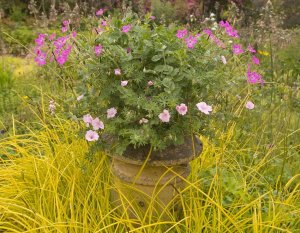

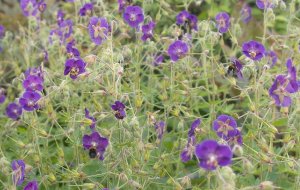




























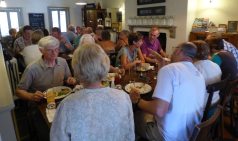




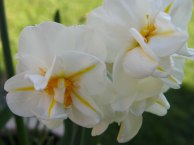






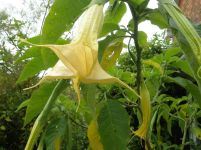









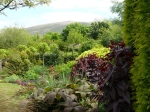









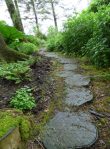






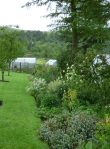









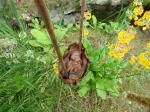






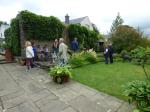

 ____________________________________________________________________________
____________________________________________________________________________


